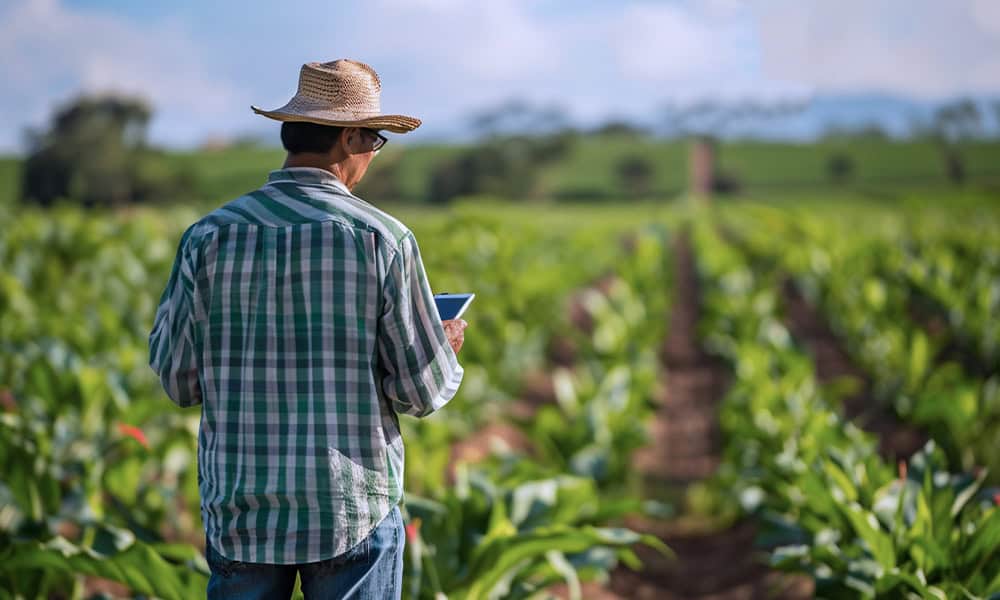For centuries, farmers used almanacs to try to predict nature. Now, a new generation of Latin American start-ups is helping to achieve this with artificial intelligence tools that promise an agricultural revolution in giants like Brazil.
Aline Oliveira Pezente, a 39-year-old entrepreneur from the Brazilian state of Minas Gerais (southeast), was working at the multinational Louis Dreyfus Commodities when she noticed a problem in the industry dynamics in Brazil, the world’s largest exporter of soybeans, corn, and beef.
Producers need large upfront loans to buy inputs such as seeds and fertilizers, she explains. But they face caution from lenders in the face of countless risks, both natural (droughts, floods, crop diseases…) and financial (bankruptcies, price drops, and more).
Aline and her husband, Fabricio, decided to study the problem at the Massachusetts Institute of Technology (MIT) in the United States, where she obtained a master’s degree and specialized in artificial intelligence (AI) and data analytics.
In 2018, they launched the start-up Traive, which collects massive amounts of agriculture-related data and then analyzes it with artificial intelligence to define risks for lenders and provide greater access to credit for farmers.
“Lenders used to use their own model (of risk analysis), like a giant Excel file. But it’s very difficult for humans, even with extensive knowledge of statistics and mathematics, to create equations that capture all the nuances,” said Aline.
Now “we can do in five minutes and with much greater precision what used to take three months,” she said.
AI for agriculture
Seven years later, Traive’s clients include agribusiness giants such as Syngenta, financial technology companies, and Latin America’s second-largest bank, Banco do Brasil.
More than 70,000 producers use its platform, which facilitated almost $1 billion in financial transactions, says Aline. The entrepreneur presented her work this week at the Web Summit in Rio de Janeiro, a major technology event called “Davos for geeks”.
Traive participated in a panel titled “Data Harvest: The Next Agricultural Revolution,” in which Alejandro Mieses, also an entrepreneur, addressed the potential of AI in the sector.
Farmers are increasingly turning to this tool to increase their yields and returns, with applications such as autonomous tractors, drones that track crop health, and intelligent cameras that recognize weeds for herbicide treatment.
TerraFirma, Mieses’ start-up based in Puerto Rico, developed an AI model that uses satellite imagery to forecast environmental risks such as natural disasters, crop diseases, and erosion.
“We insist on physics because we believe that is the starting point. We must understand how water moves, wind, how different solar exposures act on crops,” he highlighted at the Web Summit, whose edition this year had AFP as an associated media. The difficulty, according to the panelists, is that AI models must be trained with massive amounts of data in a complex process.
“It demands quite a few resources: servers, an immense data warehouse are needed,” said Mieses, 39. The result depends on the quality of the data.
Agriculture vs. climate
The agricultural industry faces criticism in countries like Brazil, whose rise as a sector powerhouse has also seen an increase in environmental destruction in key regions such as the Amazon rainforest, considered vital against climate change.
Innovation optimists argue that, given that the world’s population is expected to reach nearly 10 billion by 2050, technologies such as AI are humanity’s best hope for survival without destroying the planet.
Mariana Vasconcelos, 32, is the CEO of the Brazilian start-up Agrosmart, which uses AI to help farmers manage climate risks and produce more sustainably.
“The United Nations Food and Agriculture Organization says we need to increase food production to supply a growing population. At the same time, we have to produce with less land, less deforestation, less carbon footprint. How can we do it without technology?” she asked.
Although agriculture is often opposed to nature, “technology is proving that it can actually restore the environment, work together with nature… Agriculture is moving towards a more sustainable model,” she concluded.






